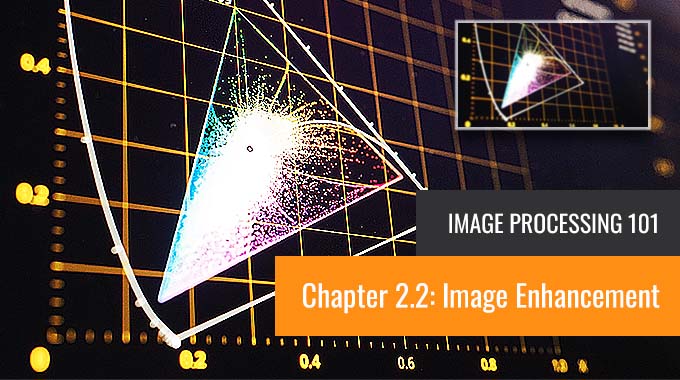Image Processing 101 Chapter 2.1: Image Enhancement

Optimizing Images: A Guide to Image Enhancement Techniques
Image enhancement is the process of emphasizing specific details within an image, while simultaneously reducing or removing any superfluous elements. This can include removing noise, revealing obscured details, and adjusting image levels to bring attention to particular features.
There are two primary categories of image enhancement techniques:
- Spatial Domain: This involves enhancing the image by manipulating individual pixels based on their spatial coordinates at a specific resolution.
- Frequency Domain: This approach involves enhancing the image by applying a Fourier Transform to the spatial domain, manipulating pixels in groups and indirectly.

In this article, we will focus on techniques that are implemented in the Spatial Domain.
Spatial Domain Techniques: A Closer Look
Spatial domain techniques can be subdivided into:
- Point Operations (Intensity Transformations): These operations involve applying the same transformation to each pixel in a grayscale image, based on its original pixel value and independent of its location or neighboring pixels. Learn more about Point Operation.
- Spatial Filters (or Mask, Kernel): The output value of these operations is dependent on the values of the function f(x,y) and its neighborhood. Explore more on Spatial Filter.
Applications of Image Enhancement
Here are some practical applications of image enhancement techniques:
- Deblurring Images: Helps to improve image clarity.
- Contrast Adjustment: Enhances image detail visibility.
- Image Brightening: Increases the lightness of an image.
-
Image Smoothing and Sharpening:
-
Smoothing filters help reduce and suppress image noise, with common types including average smoothing, Gaussian smoothing, and adaptive smoothing. Discover more about smoothing filters.
-
Sharpening filters enhance edges by eliminating blur. Find more about sharpening filters.
-
-
Noise Removal:
Noise can be introduced to images during capture, printing, or transmission. It can be identified in image processing by intensity variance between neighboring pixels. Noise removal techniques help decrease noise visibility by smoothing the image using linear or non-linear filters. 1
-
Grayscale Image Histogram Equalization:
Histogram equalization refers to a transformation where an output image has an approximately uniform distribution of pixels at each gray level. Dive into the details about grayscale image histogram equalization.
This article is Part 4 in a 7-Part Series.
- Part 1 - Image Processing 101 Chapter 1.1: What is an Image?
- Part 2 - Image Processing 101 Chapter 1.2: Color Models
- Part 3 - Image Processing 101 Chapter 1.3: Color Space Conversion
- Part 4 - Image Processing 101 Chapter 2.1: Image Enhancement
- Part 5 - Image Processing 101 Chapter 2.2: Point Operations
- Part 6 - Image Processing 101 Chapter 2.3: Spatial Filters (Convolution)
- Part 7 - Morphological Operations
-
https://www.ijsr.net/archive/v6i3/25031706.pdf ↩



 Blog
Blog